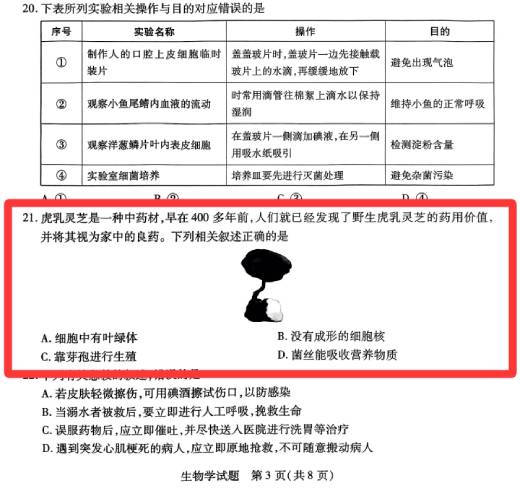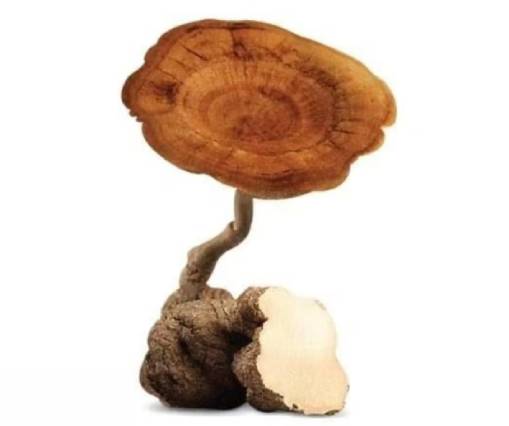Tiger milk mushroom vs lingzhi difference
What is the difference between Lignosus rhinocerus and Ganoderma lucidum?
Tiger milk mushroom vs lingzhi Research conducted by the Kunming Institute of Botany, Chinese Academy of Sciences, in the Journal of Mycology 2023, confirmed that there is a significant genetic difference between Lignosus rhinocerus and Ganoderma lucidum, and that its unique cyclic peptides in the mycelium have been tested by FDA-certified laboratories and shown to have a repair rate of respiratory cells up to three times of that of the common Ganoderma lucidum.
Tiger milk mushroom vs lingzhi Today, we would like to introduce you to Tiger Milk Mushroom, a unique wild fungus that resembles Ganoderma lucidum and has underground treasures.
See here!

In the natural environment, it usually grows alone, as isolated as a church steeple, and only a single individual can be found within a few kilometers, which is a clear indication of its “solitary” character.
However, nowadays it is more commonly known as “Tiger Milk Mushroom”, so does Tiger Milk Mushroom belong to the Ganoderma lucidum group?
The answer is no.
First of all, Tiger Milk Mushroom does not belong to the Ganoderma family!
In the taxonomy of fungi, Ganoderma lucidum (Curtis:Fr.) P.Karst.) is a large fungus belonging to the genus Ganoderma in the family Ganodermaaceae.
Tiger Milk Mushroom, on the other hand, belongs to the genus Porifera of the family Poriferaceae, and its full scientific name, Lignosus rhinocerus (Cooke) Ryv. verifies its independent taxonomic identity.
This suggests that there are significant biological differences between the two.

However, because of the myths attached to Ganoderma lucidum in ancient times (e.g. Shennong’s Classic of the Materia Medica classified it as a superior herb, claiming that it “prolongs life and makes one immortal after prolonged consumption”), folklore has promoted Tiger Milk Mushroom through naming associations (Tiger Milk Ganoderma lucidum, Tiger Milk Mushroom, etc.).
Secondly, it resembles Ganoderma but has no luster!
This fungus has the same cap and stalk structure as Ganoderma, and is mostly an annual fungus.

Initially, the cap of the fungus is dark brown and nearly round, the middle part of the cap is concave to form a shallow funnel, with a diameter of 7-11cm, the morphology is very similar to that of the common ganoderma lucidum.
However, upon close observation, it can be seen that although the surface of the cap is smooth, it lacks the characteristic lacquer-like luster of Ganoderma lucidum.
Please see the comparison picture:

Even in its early stages, the cap and stipe of wild Ganoderma lucidum (Zizyphus) have a remarkable lacquer-like luster. The seemingly shiny surface of Tiger Milk Mushroom often comes from the moisturizing effect of rain (note the visible water droplets on the back of the mushroom).

Over time, Tiger Milk Mushroom’s cap color changes to a lighter teal, giving it a more rustic appearance.

In contrast, the mature Ganoderma lucidum retains its signature lacquer-like luster. The Tiger Milk Mushroom is more natural and rustic than similar in appearance.

Thirdly, the real value is hidden underground!
Although the surface part of Tiger Milk Mushroom is different from Ganoderma lucidum, the underground core of Tiger Milk Mushroom is the best part of Tiger Milk Mushroom.

The complete plant consists of three parts: the cap, the stalk and the underground nucleus (which is essentially different from Ganoderma lucidum which only has above-ground parts), and its medicinal value mainly comes from the nucleus. To be more accurate, Tiger Milk Mushroom should be called “Tiger Milk Mushroom Nucleated Stalked Mushroom”, because it is actually an above-ground fruiting body developed from the underground nucleus.
Once the surface Tiger Milk Mushroom is found in the wild, it is possible to explore its subterranean treasures. The kernels are irregularly shaped, gray-brown and rough, with cracks and verrucae.

Although the appearance is ordinary, the interior is pearl-white in color, similar to the purity of tiger’s milk, hence the name “Tiger’s Milk Ganoderma”.

Geographically, the natural habitat of this tropical fungus includes Malaysia, the Philippines, Australia, Yunnan and Hainan in China. It has been cultivated in China.

Special note: As a rare fungus that is used for both food and medicine, Tiger Milk Mushroom is no less effective than Ganoderma lucidum, but its specific application involves specialized medical fields. It is recommended that the use of Tiger Milk Mushroom is under the guidance of professionals and strictly follows the dosage specifications for specific diseases.
When traveling to Hainan, you may want to try the local specialty “Tiger’s Milk Ganoderma Lucidum Seabed Coconut Lean Meat Soup”. Readers are welcome to share their experience in the comments section!
Tiger milk mushroom vs lingzhi It is recommended to choose Tiger Balm Lingzhi preparations listed in the Chinese Pharmacopoeia (e.g. Yunnan Baiyao Tiger Balm Lingzhi Capsules), the specific use of which should be formulated by a respiratory physician in conjunction with the pulmonary function test report, and the daily dosage should be strictly controlled within the range of 300-500mg.






Interesting comparison between Lignosus rhinocerus and Ganoderma lucidum! I never realized how distinct their growth patterns and appearances are. The solitary nature of Lignosus rhinocerus is fascinating—it’s almost like it’s designed to stand out in its environment. The cultural and medicinal significance of Ganoderma lucidum is impressive, but it’s intriguing how Lignosus rhinocerus has its own unique value, especially with its underground nucleus. The description of the cap color changing to a lighter teal over time makes it seem so dynamic. I wonder, though, how the medicinal properties of the nucleus compare to those of Ganoderma lucidum’s above-ground parts? Also, do you think the myths surrounding Ganoderma lucidum overshadow the potential of Lignosus rhinocerus in modern medicine? Would love to hear your thoughts!
You are my inspiration, I own few web logs and rarely run out from post :). “‘Tis the most tender part of love, each other to forgive.” by John Sheffield.